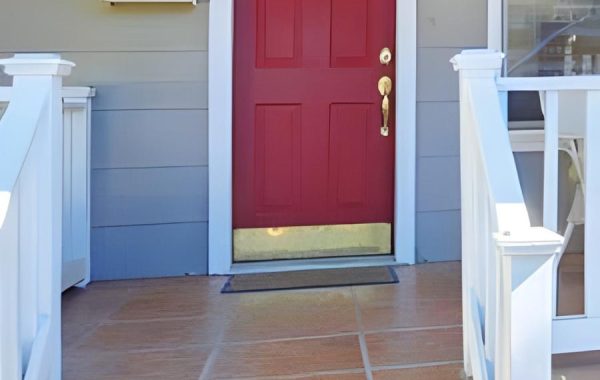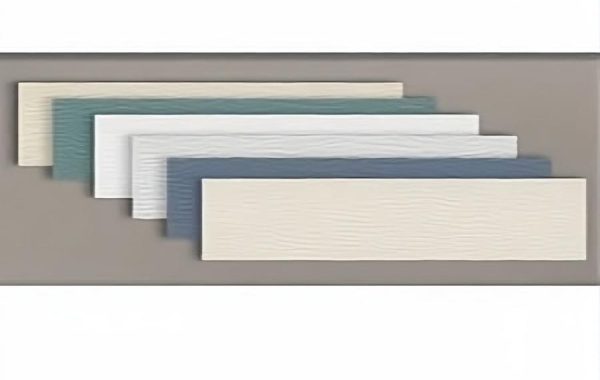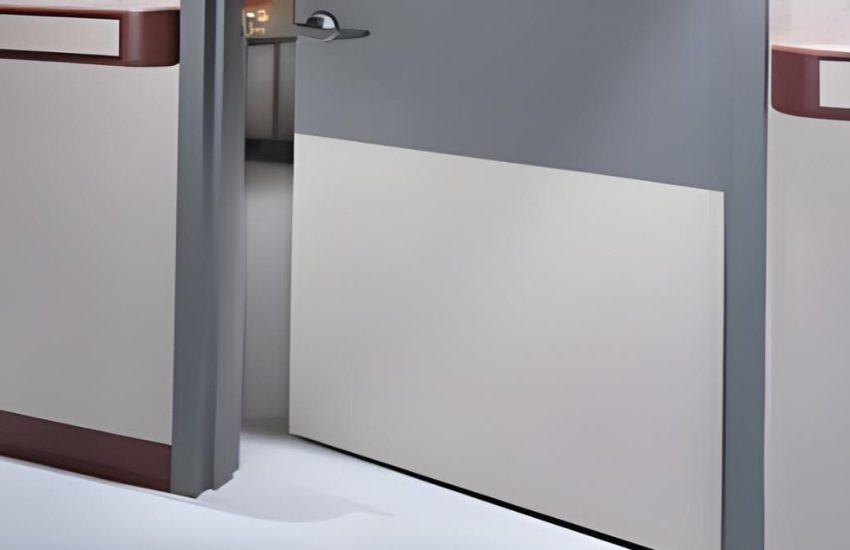Door kick plates are horizontal sheets of material fixed to the bottom of a door to defend from impact or wear such as kicking. If you’ve ever had your hands full and used your feet to open a door, you’ve probably come in contact with a door kick plate. Door kick plates are often used to protect the door from permanent damage such as marks or dents when someone is using their feet to open the door. They can range from 10-16 inches tall and are often found on the push side of the door.
Benefits of Door Kick Plates

Durability and Longevity
Preventative medicine is the best medicine, and adding a door kick plate to your door can extend the life of your door.
Easy Maintenance
A door kick plate with the right materials will defend your door and save time and money spent fixing dents and bruises to your door.
Cost-Effective Protection
The cheapest repairs are the ones you never have to make. Adding a door kick plate is your best chance at avoiding or lowering costs you would pay to fix a damaged door.
Door Kick Plate Materials
Door kick plates are most commonly made from several of the materials listed below:
Stainless Steel

When you need a strong material that’s built to take impact, stainless steel can be the best material. Stainless steel kick plates are often the most durable and attractive. There are few materials on the market that will protect and contribute to the safety of a door better than stainless steel kick plates. You’ll commonly find them at places such as schools and hospitals for those reasons.
Aluminum
A lighter, more cost effective alternative to stainless steel is aluminum. Aluminum is a lighter metal that has similar protective properties to stainless steel.
Vinyl and Plastic

Using a material like vinyl for your door kick plate could be an effective solution if you want a material with protective qualities that isn’t made of metal. Another fantastic choice is plastic. Plastic can be a good high strength, resource efficient, durable alternative to vinyl door kick plates.
Installation of Door Kick Plates
Tools and Materials Needed
A good list of tools to start with would be a tape measure, masking tape, a pencil, a drill and drill bits. How to install depends on what kind of plate you chose: Screw-in, Glue-on, or Magnetic.
Screw-in kick plates
- Use an all-purpose cleaner to get rid of any dust or dirt on the door.
- Measure and mark 1 inch from the right and 1 inch from the left sides of the door panel using a pencil.
- Place the screw-in kick plate on the door and make a mark of the holes onto the door. Then using a power drill, drill holes on all 4 marked points and screw the kick plate securely on the door.
Glue-on kick plates
- Clean the door of any debris and dirt using an all-purpose cleaning solution. Then, measure and mark 1 inch from the right and 1 inch from the left side of the door panel using a pencil.
- Place the door kick on a rag and using a construction adhesive, apply a generous amount of the glue onto the back portion of the plate.
- Once done, carefully position the glue-on kick plate into the measured area and tap it until it is secured.
- Wipe off any excess glue from the sides of the plate.
Magnetic kick plates
- Clean the door of any dirt or dust particles. Then, measure and mark 1 inch from the right and 1 inch from the left side of the door panel using a pencil.
- Position the magnetic kick plate onto the stainless steel door and hold it there until it is stuck firmly in place.
Quick Tips for Choosing the Best Door Kick Plate
- Choose a kick plate that is 2 inches smaller than the width of the door, so that when you finally install it on the exterior part of your door there will be 1 inch gap on either side. For height, a standard kick plate measures about 6 – 8 inches.
- Choose a kick plate according to the material of your door. For example, if you have a wooden door, then it is ideal to purchase screw-in or glue-on kick plates. If you have a metal door then choose a magnetic kick plate mount. If the magnetic kick plates fall off especially in the case of stainless steel doors, then you can always opt for screw-in or a strong glue-on kick plate.
- When purchasing or ordering kick plates, choose them based on the color of the door panel, hinges, door lock or according to the interiors of the house. The kick plates should not look out of place after installing it.
FAQs About Door Kick Plates
How do you install a door kick plate?
To install a door kick plate, clean the door surface, measure and mark the desired placement, then attach the plate using screws or adhesive as per the manufacturer’s instructions. Make sure it is level and centered to ensure proper protection and appearance.
What materials are door kick plates made of?
Door kick plates are typically made from durable materials such as stainless steel, brass, aluminum, and plastic. These materials are chosen for their strength and ability to withstand frequent impacts and wear.
How do I know if I need a door kick plate?
A door kick plate is like insurance. While you may not need a door kick plate, not having a door kick plate is a surefire way to increase the likelihood of unwanted damage and deterioration to your door.
What’s the purpose of door kick plates?
The purpose of door kick plates is to protect the bottom of doors from damage caused by foot traffic, kicks, and other impacts. They help prevent scratches, dents, and scuffs, extending the life and appearance of the door.
Can kick plates be used on both interior and exterior doors?
Yes, kick plates can be used on both interior and exterior doors. They provide protection from scuffs and damage, enhancing durability and maintaining the doors appearance in both settings.
